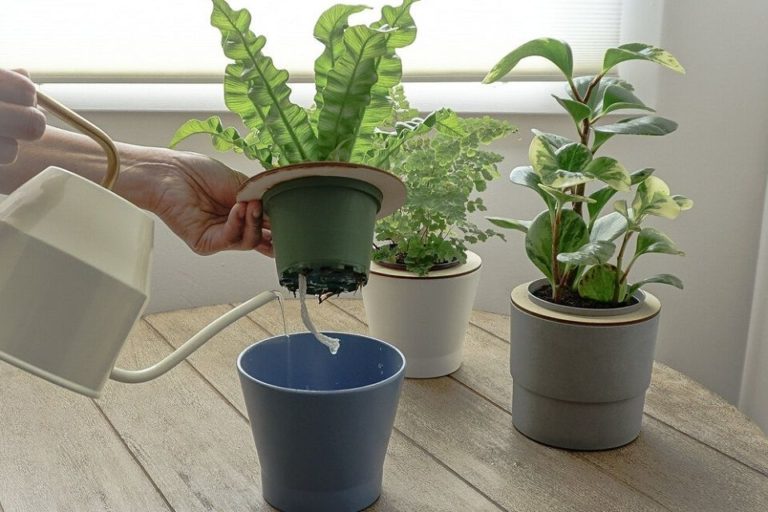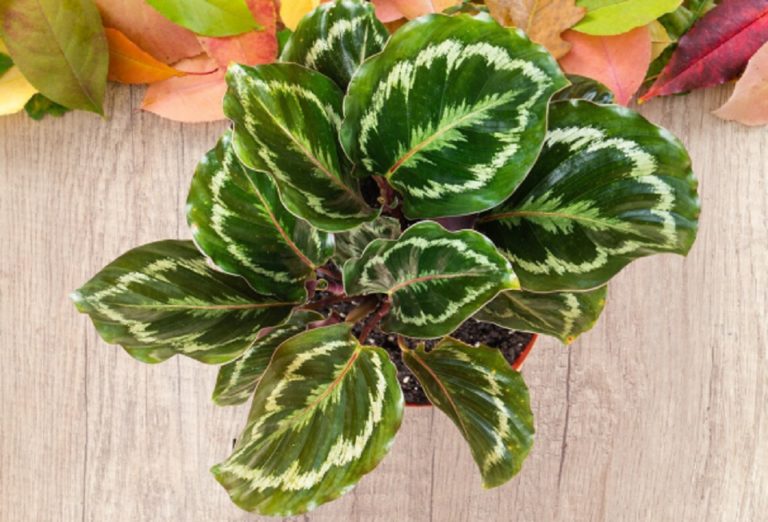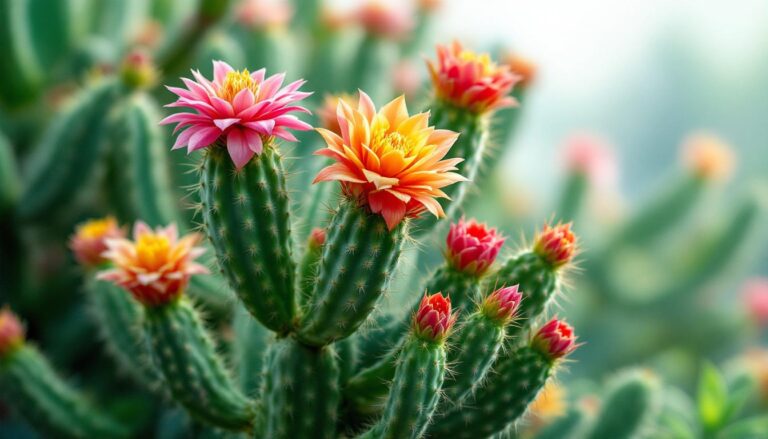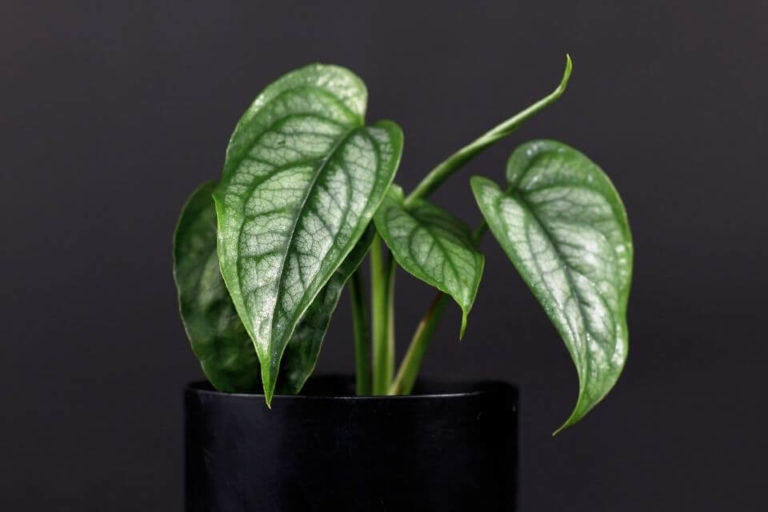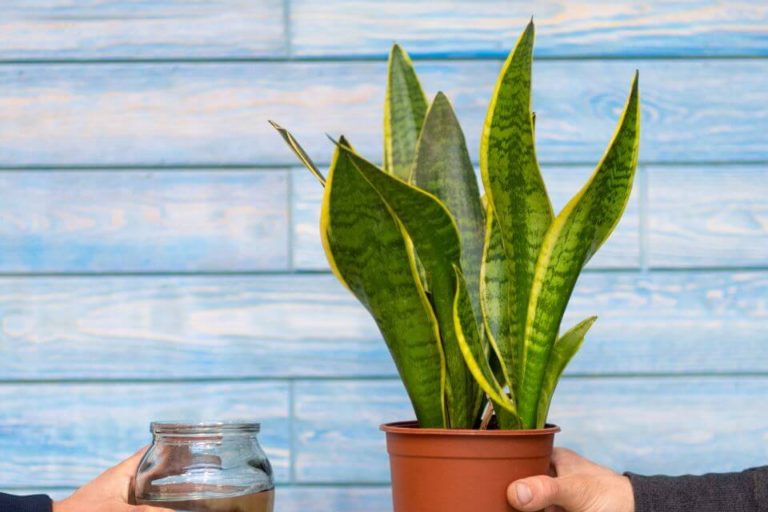Jade Plant Care: How To Grow and Care For Crassula Ovata
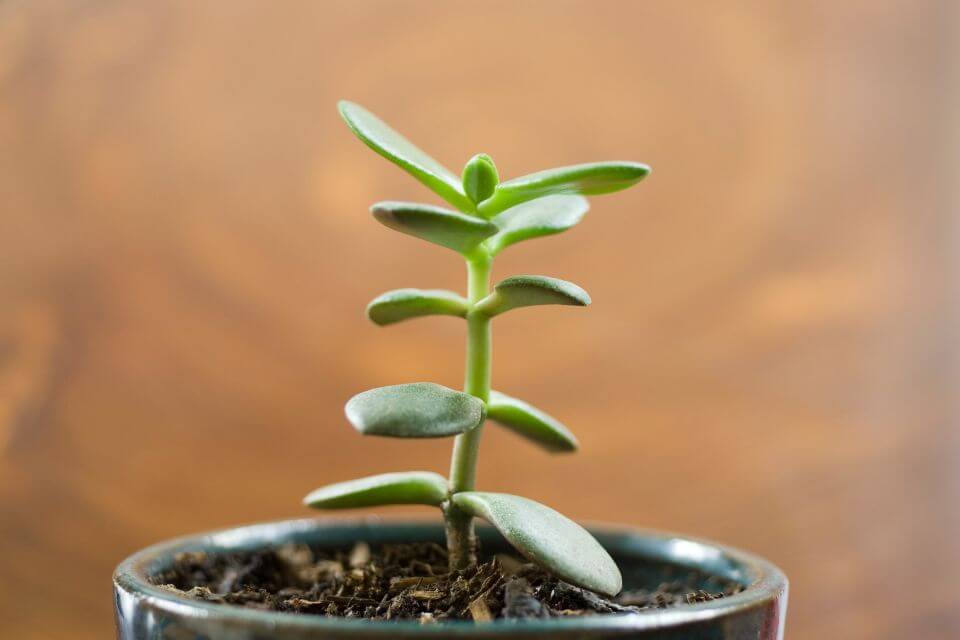
Crassula Ovata, also known as the Jade Plant, is a succulent that is popular for its easy care and interesting shape. With proper care, this succulent plant can grow into a beautiful houseplant that will bring greenery to any room.
In this Jade Plant care article, we’ll share tips on how to grow and care for your jade plant. Let’s get started!
TABLE OF CONTENTS
Overview of Jade Plant
Crassula Ovata, also known as Jade Plant, is a succulent perennial that typically blooms in the spring. It produces small white flowers and its leaves are thick and fleshy.
The plant is native to Africa but it can be found in other parts of the world as well. Jade Plant is toxic to both dogs and cats so it’s important to keep it out of reach of your pets.
The plant is easy to care for and it doesn’t require much attention. It’s a great plant for beginners who are just starting to get into gardening.
Jade Plant Size and Appearance
A Crassula Ovata plant can grow to be 3 to 6 feet tall with a 2 to 3 feet spread. They have thick, fleshy, oval-shaped leaves that are a beautiful green color. The jade plant is a succulent, so they store water in its leaves and stems.
This enables them to survive in dry climates or periods of drought. They are native to Africa and South America, but they can be grown all over the world.
Jade plants are very popular houseplants because they are easy to care for and they look great. When choosing a Crassula Ovata plant for your home, make sure to pick one that is the right size for your space.
You also want to make sure that the pot has drainage holes so that the plant doesn’t get too much water and rot. With proper care, your Jade plant will thrive and bring you years of enjoyment.

Jade Plant Uses and Placements
The Jade Plant is a popular choice for indoor gardens because it is easy to care for and can thrive in low-light conditions. When choosing a location for your plant, pick a spot that receives indirect sunlight.
Also, Crassula ovata is a beautiful succulent that enhances the look of any room. They can be placed on a windowsill, bookshelf, or end table.
Jade plants are also known to bring luck and fortune to those who have them in their home. This makes them a popular choice for businesses as well.
If the leaves start to turn yellow, that means the plant is getting too much sun. Jade plants can also be placed outdoors in a shady spot during the summer months. Just be sure to bring them indoors before the first frost.
With proper care, your jade plant can provide years of enjoyment.
Jade Plant Care and Maintenance
This succulent is a popular houseplant that is easy to care for and can thrive indoors with minimal effort. The Crassula Ovata plant is known for its thick, glossy leaves and compact growth habit.
While it is a tough plant that can tolerate neglect, there are a few basic things that you can do to ensure that your jade plant stays healthy and happy.
The Soil Requirement
Jade plants are a type of succulent that originates from South Africa. They are popular houseplants because they are easy to care for and can live for a long time with proper care.
One important requirement for jade plant care is well-drained soil. Jade plants need soil that drains quickly to prevent them from sitting in water, which can lead to root rot. It is best to use a specific potting mix made for succulents and cacti.
You can also make your own mix by combining equal parts of sand, peat moss, and perlite. A good way to test if your soil drains well is to stick your finger in it.
If the soil is still wet after you’ve waited a few minutes, it needs to be amended with sand or perlite to improve drainage.
Once you have amended the soil, make sure to provide your jade plant with bright light and water it when the top inch of the soil is dry. With proper care, your jade plant will thrive for years to come.
Watering Jade Plant
Watering your jade plant properly is important to keep it healthy. The frequency of watering will depend on the plant’s size, potting mix, and the amount of light it receives.
During the growing season, water your jade plant when the soil dries out. Allow the water to soak in until it starts to drain from the bottom of the pot. Then, empty the drainage tray so that the plant isn’t sitting in water.
In the winter, reduce watering to once every few weeks. If you notice that the leaves are starting to shrivel, that’s a sign that the plant needs more water. To help ensure that you’re not overwatering your jade plant, consider using a moisture meter.
This tool can be a helpful way to keep an eye on the moisture levels in the soil and avoid harming your plant.
Lighting Requirements and Exposure
One of the most important factors in caring for a jade plant is providing the right amount of light. Jade plants require indirect sunlight and prefer a south-facing window.
If the plant does not receive enough light, it will become leggy and produce fewer leaves. Too much direct sunlight can cause the leaves to turn red or brown and may even lead to sunburn.
If you are unsure whether your Crassula Ovata plant is getting enough light, observe the color of the leaves. Healthy leaves should be deep green color, while pale leaves indicate a lack of sunlight.
Exposure to indirect sunlight will also help to prevent leaf drops, which can be a common problem for jade plants that do not receive enough light. By following these simple tips, you can ensure that your jade plant thrives and provides years of enjoyment.
Required Temperature Range
The Crassula ovata plant is a tough and resilient plant that can tolerate a wide range of temperatures. However, it is usually best to keep the plant in an environment that is 65 to 75 degrees Fahrenheit.
The lower temperatures can cause the leaves of the plant to drop off. If you are keeping the plant outdoors, make sure to bring it indoors or provide some sort of protection if the temperature is expected to dip below 55 degrees Fahrenheit.
Humidity Needs
The Jade Plant is a popular succulent that is known for its easy care and tough nature. native to arid regions of Africa, the jade plant is adapted to survive in dry conditions.
As a result, it does not require high humidity levels to thrive. In fact, too much moisture can actually be harmful to the plant, causing the leaves to rot.
For this reason, it is best to err on the side of caution and allow the soil to dry out completely between watering.
If you live in an area with high humidity levels, it is also important to provide good air circulation around the plant to prevent fungal diseases. With a little care, your jade plant will thrive even in less-than-ideal conditions.
Fertilizing Jade Plant
Fertilizing your Jade plant is important to keep it healthy and growing. The best fertilizer to use is balanced 20-20-20 (nitrogen, phosphorus, and potassium), which you can find at most gardening stores.
You should fertilize your Crassula Ovata plant every two weeks during the growing season, which is typically from March to September. To fertilize, mix the 20-20-20 fertilizer with water according to the package directions.
Then, water your Jade plant with the mixture. Be sure to not overfertilize, as this can damage the plant. If you see the leaves turning yellow or brown, reduce the amount of fertilizer you are using. With a little care and attention, your plant will thrive.

Pruning Jade Plant
Jade plants are a popular choice for indoor gardens, thanks to their low-maintenance care requirements. However, jade plants do need to be pruned on occasion to maintain their shape and aesthetic appearance.
If you’re new to pruning, don’t worry – it’s easy to learn how to prune a jade plant. Start by choosing the right time of year. Late winter or early spring is ideal, as this is when the plant is beginning to active growth.
Next, use sharp, clean shears to remove any dead or damaged leaves. Once you’ve removed the damaged leaves, you can then trim back any overgrown branches. When pruning, be sure to make clean cuts at a 45-degree angle.
With a little practice, you’ll be an expert at pruning jade plants in no time!
Re-Potting Jade Plant
If your Crassula Ovata plant is looking a little cramped in its pot, it may be time for an upgrade. Luckily, repotting a jade plant is easy to do at home with just a few supplies.
All you’ll need is a 4 to 6 inches diameter pot with drainage holes, some fresh well-draining potting mix, and a sharp knife.
Once you’ve got your supplies, simply follow these steps:
1. Fill the pot with potting mix, leaving a few inches at the top.
2. Carefully remove the jade plant from its current pot. Gently loosen the root ball and lightly dust off any excess soil.
3. Place the jade plant in the new pot and fill in around it with potting mix, tamping gently to remove any air pockets.
4. Water lightly and place in a bright spot out of direct sunlight.
That’s all there is to it! With just a little bit of effort, you can keep your jade plant healthy and happy for years to come. Just remember to give it a new home every few years. Repotting helps to ensure that your plant stays healthy and doesn’t become rootbound.
How to Propagate Jade Plant
Propagate by Cuttings
If you’re looking for a fast and easy way to propagate your jade plant, cuttings are the way to go. All you need is a sharp knife or pair of scissors and a 2- to 3-inch long cutting from a healthy jade plant
Here’s a step-by-step guide on how to do it:
1. Start by taking a 2 to 3 inches long cutting from a healthy Jade plant. Make sure the cutting has at least 2-3 leaves on it.
2. Next, fill a pot with a well-draining potting mix and place the cutting in it. Water the potting mix well so that it’s moist but not soggy.
3. Place the pot in a warm, bright location out of direct sunlight. Keep an eye on the potting mix and water it when needed to keep it moist.
4. After 2-3 weeks, you should see new growth on the Cutting. Once this happens, you can transplant the Cutting into a larger pot or into your garden.
Congratulations, you’ve successfully propagated a jade plant from cuttings!
Propagate by Leaves
Jade plants are easy to propagate from leaves, and doing so is a great way to create new plants for your home or garden.
Here’s a step-by-step guide on how to do it:
1. Start by choosing a healthy leaf from your Crassula Ovata plant. It should be 2 to 3 inches long.
2. Cut the leaf off at the stem, then place it in a pot of well-draining soil.
3. Water the soil lightly, then place the pot in a warm, sunny spot.
4. In 4-6 weeks, you should see new growth emerging from the leaf. Once the new plant has several sets of leaves, you can transplant it into its own pot.
With a little patience, you can easily propagate jade plants from leaves. This inexpensive and easy method is a great way to create new plants for your home or garden.
Pests Problems
This is one of the common problems for every plant. Crassula Ovata plants are susceptible to mealybugs, and spider mites. These pests can cause leaf drops, stunted growth, and yellowing of the leaves.
If you see any of these pests on your jade plant, be sure to act quickly.
Other Common Problems
Jade Plant is one of the most popular houseplants. It is loved for its beautiful, glossy leaves and its ability to thrive with minimal care. However, even the hardiest plants can develop problems from time to time.
Here are some of the most common issues that Jade Plant owners face:
Losing Leaves:
It’s not uncommon for Crassula Ovata plants to lose their leaves or have them drop off. This could be a sign that the lighting is too bright and you should move your plant towards darker spots with less light.
If necessary provide artificial sources of illumination such as fluorescent lamps which will help meet its requirements so it can thrive
Brown Leaves:
This is often caused by too much sunlight or underwatering. If the leaves are brown and brittle, it is likely that the plant is not getting enough water. On the other hand, if the leaves are soft and droopy, they may be getting too much water.
Yellow Leaves:
Overwatering is one of the most common mistakes made by new gardeners. It can lead to leaves turning yellow, rot, and fungus, so if you notice some problems with your Crassula Ovata plant it might be time for a reduction in watering levels or even replacement!
In case there’s no decay yet but just mildew on leaves instead – this means over-watered roots have been let go too long without water changes; make sure they’re getting enough irrigation only when necessary.
If you are experiencing any of these problems with your Jade Plant, don’t despair! With a little care and attention, most jade plants can bounce back quickly.
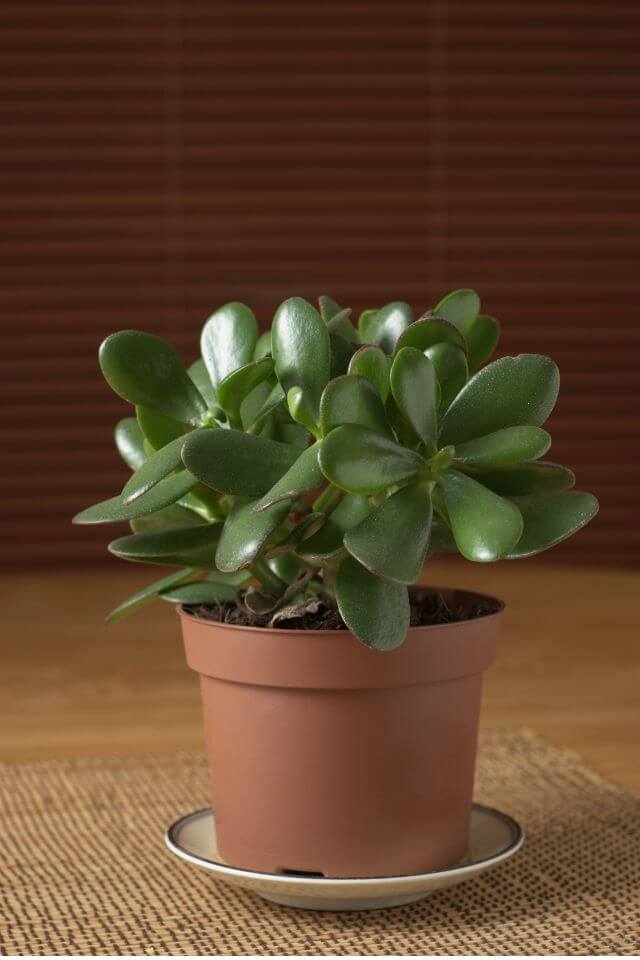
Frequently Asked Questions
We have discussed some questions that are generally asked by new gardeners when caring for Jade Plant for the first time.
Does A Jade Plant Need A Lot Of Sunlight?
Yes, Jade plants need a lot of indirect sunlight. In fact, too much direct sunlight can scorch the leaves. Jade plants prefer bright, indirect light.
Is Jade A Good Indoor Plant?
The Jade plant is a succulent that can often grow indoor containers. However, they do need bright light and should be watered only when the soil is dry.
Do Jade Plant Flower?
Yes, Crassula Ovata plants bloom, but it is not common. The flowers are small and white and typically appear in the late fall or early winter.
Can I Grow Jade Plant Under Lights?
Yes, Jade plants can grow under light, but they need bright light. If the light is not bright enough, the plant will become leggy and the leaves will lose their color.
Is Jade Plant Toxic To Cats And Dogs?
Yes, Jade plants are toxic to both cats and dogs if they ingest the plant. Symptoms of toxicity include vomiting, diarrhea, and drooling. If you think your pet has ingested a Crassula Ovata plant, please contact your veterinarian immediately.
How Fast Does Jade Plant Grow?
Jade plants are slow-growing succulents. They typically grow 1 to 2 inches per year.
Where Can I Buy Jade Plant?
Jade plants are widely available at garden centers and nurseries. They can also be purchased online at Amzon.com, eBay.com, and Etsy.com.
Conclusion
Jade Plant is a succulent that is popular for its easy care and low maintenance needs. This plant can be easily propagated by leaf cuttings and will thrive in bright, indirect light.
In this article, we have discussed the basics of how to grow and care for a Jade Plant-from potting and watering to fertilizing and propagating. If you are experiencing any of these problems with your Jade Plant, don’t despair!
With a little care and attention, most Crassula Ovata plants can bounce back quickly.

